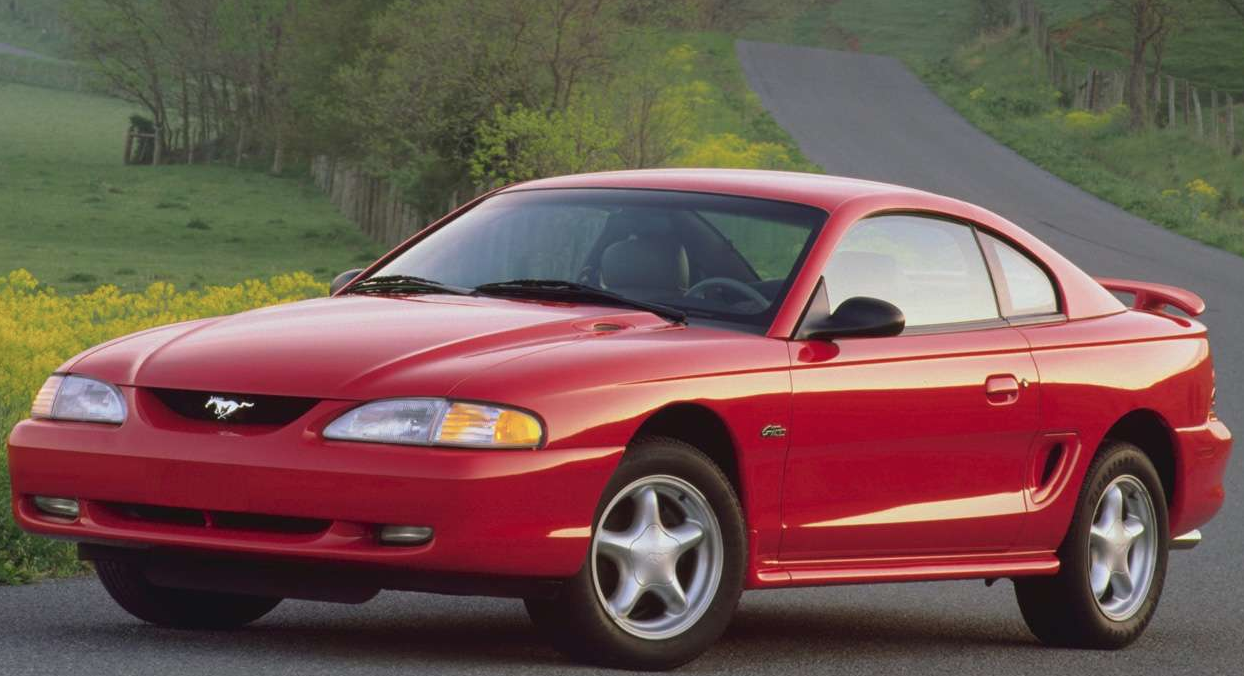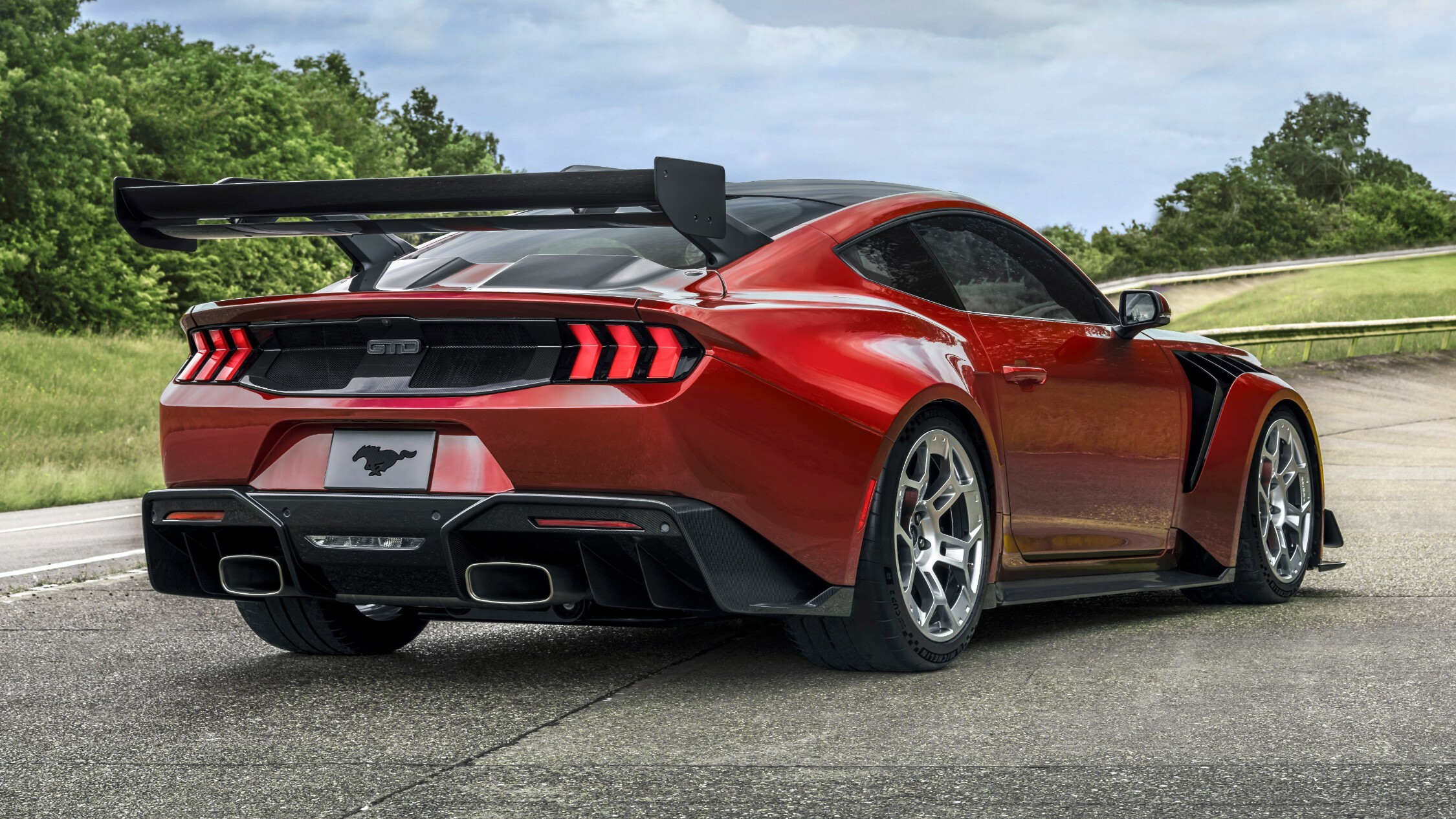The 1996 Mustang GT is equipped with rear disc brakes designed to provide better stopping power and overall performance compared to drum brakes. However, as these vehicles age, some common braking issues can arise—one of the most concerning being when the rear disc brake sticks.
When a rear disc brake sticks, it can cause various symptoms, including dragging brakes, reduced fuel efficiency, overheating, and excessive wear on brake pads. If left unresolved, this issue could affect your vehicle’s handling, safety, and braking performance.
This issue can stem from several factors, including corroded components, improperly adjusted parking brakes, or issues with the calipers or brake pads. With proper diagnostics and a good understanding of the brake system, you can prevent further damage and maintain the Mustang’s legendary performance. Let’s explore the common causes behind this problem.

Contents
- 1 Common Causes of Rear Disc Brakes Sticking on the 1996 Mustang GT
- 2 Diagnosing and Fixing the Issue
- 3 Frequently Asked Questions
- 4 Conclusion
Common Causes of Rear Disc Brakes Sticking on the 1996 Mustang GT
The rear disc brake sticking issue on the1996 Mustang GT can be caused by several underlying factors. Identifying the root cause will allow you to choose the best solution and restore optimal braking performance.
1. Seized Caliper Slide Pins
One of the most common causes for the rear disc brake sticking on the 1996 Mustang GT is the seizing of the caliper slide pins. These pins allow the brake caliper to move freely along the rotor when the brake pedal is pressed and released. Over time, corrosion, dirt, grime, or a lack of lubrication can cause these pins to seize or become stiff, preventing the caliper from moving freely. When this happens, the brake pad may stay engaged with the rotor, causing the brake to drag and, eventually, overheat.
Symptoms of Seized Caliper Slide Pins
Here are some common symptoms of seized caliper slide pins issue –
- Uneven brake wear: If one brake pad is wearing faster than the other, it could be a sign that the caliper isn’t releasing properly.
- Overheating brakes: You may notice excessive heat coming from the wheel, which is often a direct result of dragging brakes.
- Pulling to one side: If only one caliper is sticking, the car may pull to one side when braking.
Solution
The solution to this problem is to clean and lubricate the caliper slide pins. If the pins are too damaged, they should be replaced. Regular maintenance of these parts can prevent this issue from recurring. Applying high-temperature brake grease to the pins will keep them from seizing.
2. Faulty Brake Calipers
Another common cause of the rear disc brake sticking on your 1996 Mustang GT is faulty brake calipers. Brake calipers contain pistons that apply pressure to the brake pads when the brake pedal is pressed. Over time, the pistons and calipers can become rusted or worn out, especially if the rubber seals around the pistons break down or allow dirt and moisture to enter.
Symptoms of Faulty Brake Calipers
Here are some common symptoms of faulty brake calipers –
- Brake pads remaining in contact with the rotor: When the caliper piston becomes stuck, it might not retract when you release the brake pedal, causing the brake pads to stay engaged with the rotor.
- Excessive heat from one wheel: The sticking brake caliper will cause the brake components to overheat and create an excessive amount of heat, which can lead to warped rotors or damaged brake pads.
- Unusual braking noises: Grinding or squealing sounds from the wheel could indicate that the brake pads are being constantly pressed against the rotor.
Solution
If the brake caliper is damaged or the piston is stuck, replacing the caliper is often the best solution. It’s a relatively straightforward repair that will ensure the braking system works properly again.
3. Parking Brake Cable Issues
The parking brake in the 1996 Mustang GT is connected to the rear disc brakes. Over time, the parking brake cable can become tight, frayed, or improperly adjusted. If the parking brake cable is too tight or not fully disengaged, it can cause the brake pads to remain engaged with the rotor even after the parking brake has been released.
Symptoms of Parking Brake Cable Problems
Here are some common symptoms of parking brake cable –
- Car rolls unevenly or drags when driving: You may notice the car doesn’t roll freely when in neutral, indicating the brake is still engaged.
- Uneven brake wear: If the parking brake is constantly dragging, the brake pads will wear out faster than usual.
- Strange smells: A burning odor may occur due to excessive heat from the dragging brakes.
Solution
Adjusting the parking brake cable or replacing it if it’s frayed will solve this issue. Make sure the parking brake is properly disengaging when you release it to ensure the brake pads aren’t constantly in contact with the rotor.
4. Contaminated or Low-Quality Brake Fluid
Another factor that can contribute to rear disc brake sticking is contaminated or low-quality brake fluid. Brake fluid is essential for transmitting the force you apply to the brake pedal to the brake calipers. Over time, brake fluid can degrade or become contaminated with moisture, dirt, or air. When this happens, it can cause the brake system to malfunction, including issues with the caliper piston not retracting properly.
Symptoms of Contaminated Brake Fluid
Here are some common symptoms of contaminated brake fluid –
- Spongy brake pedal: A spongy or soft brake pedal can indicate air in the brake lines or degraded fluid.
- Uneven braking: If the fluid has contaminants, it may cause inconsistent braking force, leading to dragging brakes.
- Decreased braking performance: Contaminated brake fluid can lead to reduced braking power and delayed response.
Solution
Regularly replacing the brake fluid is essential for maintaining brake performance. Flush the brake fluid every two years or as specified in the owner’s manual to prevent moisture build-up and contaminants from affecting the brake system.
5. Worn or Damaged Brake Pads and Rotors
If the brake pads or rotors on your 1996 Mustang GT are worn or damaged, they can cause the rear disc brake to stick. Worn-out pads can create an uneven surface, which can affect the caliper’s ability to properly disengage. Similarly, warped or damaged rotors can create friction that causes the brake pads to stay engaged.
Symptoms of Worn Brake Pads and Rotors
Here are some common symptoms of worn brake pads or rotors –
- Grinding noises: Worn brake pads or damaged rotors can cause a grinding sound when braking.
- Vibration while braking: Warped rotors can cause the vehicle to shake when the brakes are applied.
- Excessive brake dust: Overused or poorly maintained brake pads can create more dust than usual.
Solution
Inspecting and replacing worn brake pads and rotors is necessary to ensure the proper functioning of your Mustang’s braking system. Regular maintenance and early replacement can prevent further damage to the braking components.
Diagnosing and Fixing the Issue
Diagnosing and fixing the rear disc brake sticking issue involves performing a series of steps to check for signs of wear, damage, or malfunction. Here are some steps to follow:
1. Visual Inspection
Start by visually inspecting the rear brakes for signs of damage. Check the brake pads for uneven wear, the rotors for grooves or warping, and the calipers for signs of rust or fluid leakage.
2. Test the Parking Brake
Engage and release the parking brake several times to check if it is disengaging properly. If the parking brake feels too tight or does not fully release, adjust or replace the cable.
3. Check the Brake Fluid
Inspect the brake fluid reservoir to ensure the fluid level is adequate and that the fluid is clean. If the fluid appears murky or has an off-color, flush the brake system and replace it with new, clean brake fluid.
4. Inspect the Calipers and Slide Pins
Check for seized or damaged calipers and slide pins. If the caliper or slide pins are seized, you will need to replace them. Be sure to lubricate the slide pins to prevent future seizing.
5. Take the Vehicle for a Test Drive
Once you’ve inspected and repaired the necessary components, take the vehicle for a short drive to check for any signs of brake sticking or overheating. Listen for unusual sounds or pulling to one side, which can indicate an ongoing problem.
Frequently Asked Questions
Here are some FAQs about rear disk stick on 96 Mustang GT –
1. How can I tell if my rear disc brake is sticking?
Look for signs such as a noticeable decrease in fuel efficiency, overheating from the wheel, or uneven brake pad wear. If the car pulls to one side during braking, this may also indicate a sticking brake.
2. Can I fix a sticking rear disc brake myself?
Yes, you can fix a sticking rear disc brake by inspecting and replacing the brake calipers, slide pins, and brake fluid. If you’re not comfortable with the repairs, consider seeking help from a professional mechanic.
3. How often should I replace the brake fluid in my Mustang GT?
Brake fluid should be replaced every two years or as specified in your owner’s manual to ensure optimal braking performance.
4. Why does my parking brake cause the rear disc brake to stick?
A malfunctioning or over-tight parking brake cable can cause the brake pads to stay engaged, even when the parking brake is not applied, resulting in the brake sticking.
5. What can happen if I don’t fix a sticking rear disc brake?
If left unfixed, a sticking brake can cause overheating, uneven brake wear, and potentially damage the brake components. It may also compromise your vehicle’s stopping power and safety.
Conclusion
Experiencing rear disc brake sticking on your 1996 Mustang GT can be frustrating, but understanding the causes behind the issue is key to solving the problem. Whether it’s a seized caliper slide pin, faulty brake calipers, a malfunctioning parking brake, or contaminated brake fluid, these issues can all be diagnosed and fixed with some knowledge and the right tools.




